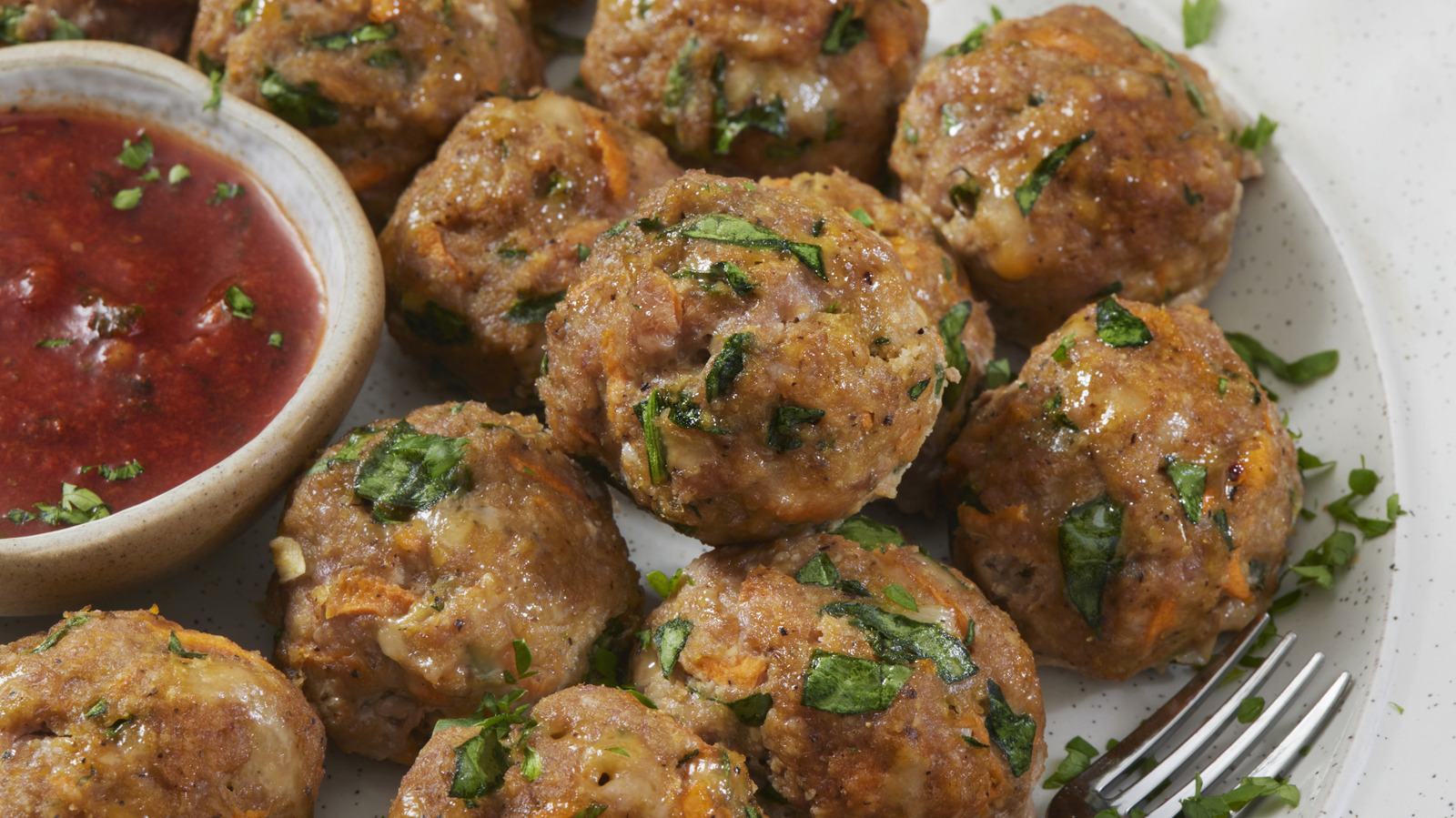When you think of poultry dishes, you likely picture comforting classics like a plate of chicken tenders, a turkey leg, or simply a grilled chicken breast. However, bird-derived cooking is a broad category, and two especially malleable ingredients are ground turkey and ground chicken. High in protein and low in fat, these options work well as leaner alternatives to ground beef, lending a delectable, meaty consistency to practically any dish.
As these two meats are derived from different animals, you may wonder about their distinctions. The truth is, they have a lot more in common than they do in contrast. Since you can even swap out the chicken in chicken tenders with turkey, it’s unsurprising that there’s a lot of overlap whenever the two proteins are pulverized. Still, there are a few differences to note. Turkey is a bit leaner and generally meatier than chicken, hence its popularity in dishes like turkey burgers. Meanwhile, ground chicken has great moisture retention, and its fat absorbs flavors with greater ease. So, while interchangeable in many dishes, there are a few tailored applications to consider when preparing either of these two affordable meats.
What is ground chicken?
Like other minced meats, ground chicken comes in many varieties, but it generally contains both dark and white meat. Cuts like the thigh and breast, as well as a small amount of skin, all end up in the mix, with the varying ratios influencing fat composition. Especially in the U.S., white meat tends to be more prevalent, creating meat mixes with only 5% fat composition. More thigh-heavy ground chicken can reach up to 10% fat, but this is relatively rare.
As a result, the lean nature of ground chicken is one of its defining qualities. Fat is flavor, and with such a minimal quantity, the poultry product acts as a neutral canvas for seasoning. Furthermore, you’ll want to mix in some oil (or a different animal-based fat) while cooking, as there’s always a risk of your chicken drying out. With these considerations in mind, however, ground chicken is a delicious and wonderfully versatile ingredient.
It’s a great meat substitute in everything from tacos to burgers to dumplings and even meatballs. Plus, with its unimposing character, it’s easy to buy ground chicken and integrate it into fuss-free weekday meals, like mixed into a pasta or sprinkled atop a salad. So, pick up a package the next time you’re out shopping — there are countless ways to put the meat to good use.
What is ground turkey?
Ground turkey follows an assembly process similar to chicken. Just note that breasts are less common in ground turkey than in ground chicken. Instead, thighs and drumsticks are the main components. The greater quantity of dark meat makes ground turkey slightly richer in flavor and creates a thicker texture akin to ground beef. As for fat content, ground turkey’s range is a bit more expansive than that of ground chicken, reaching anywhere from 15% fat to as little as 1%. So, remember to look at the fat content when selecting ground turkey, as the percentage heavily influences the moisture and flavor of the final dish.
While turkey turns up the flavor one notch above chicken, it’s still much milder than beef or pork. As a result, its cooking applications often follow in ground chicken’s footsteps: Think pastas, stuffing for pies and casseroles, and taco filling. Turkey’s meatiness does, however, benefit particular recipes, with many people preferring the savory flavor of a turkey burger over a chicken burger, as well as the rich character it lends meatloaf.
Ground turkey offers a slightly meatier consistency
Especially when comparing to much fattier ground beef, minced chicken and turkey have more similarities than differences. They’re both affordable poultry-based protein sources that have a mild flavor and can use extra fat during cooking to retain moisture. In many applications, the two meats are interchangeable. In dishes like a pasta, stir-fry, or a meaty salad — like a poultry take on Laotian larb — either will work well.
The two ground products do, however, slightly differ in nutritional composition, which can impact their consistency. Generally, ground turkey contains less fat and slightly more (or at least an equal amount of) protein. The texture is coarser, richer, and a little more reminiscent of beef. So, for recipes in which texture makes a big difference in each bite, turn to turkey. This protein will hold up better than chicken in an easy slow-cooker spicy chili, turning less mushy with time. Similarly, it’s a tad easier to extract crispiness from turkey when searing (which is why we think turkey burgers deserve the smash treatment).
Meanwhile, chicken’s moisture retention means there’s less risk of the dish drying out, as long as you don’t overcook it. Try crafting a batch of chicken meatballs — you’ll get more juiciness in the final product. Likewise, a batch of seared and broiled parmesan chicken patties won’t pop with meatier turkey, so take note when to swap.







